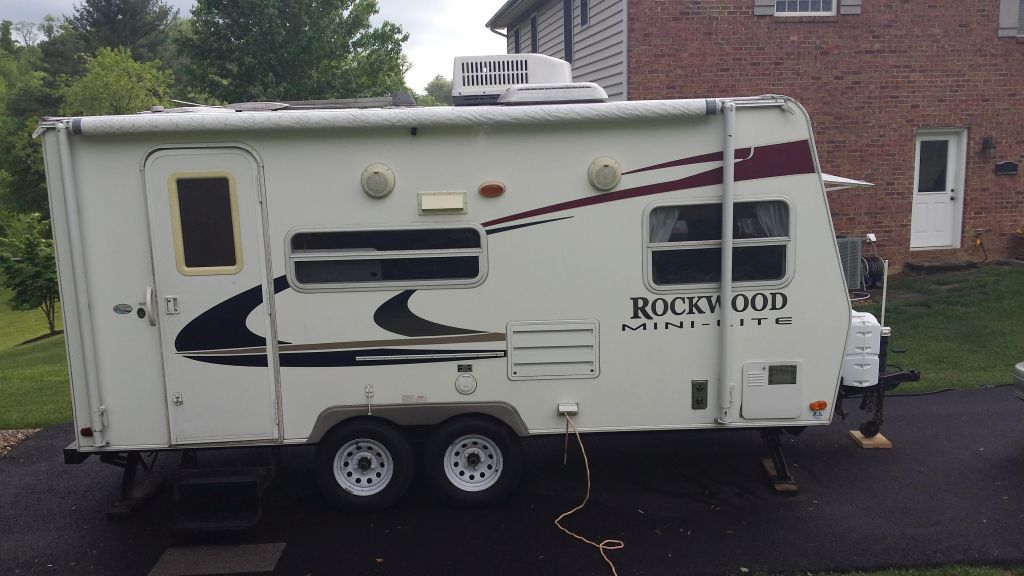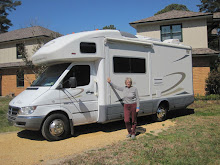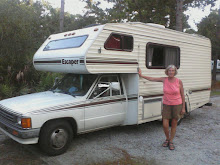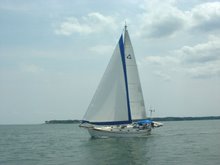Position: N 09 35.059 W 078 41.092
Location: Isla Tigre, Kuna Yala, Panama
The local indigenous people call themselves the Kuna. Their name for the San Blas Islands is Kuna Yala. Kuna Yala, while a part of Panama, is ruled independently by the Kuna general congresso. Recognized as an official reserve in 1938, Kuna Yala was granted full administrative and judicial autonomy in 1953.
No Kuna is allowed to marry a non-Kuna. If they do, they are expelled from Kuna Yala. While ensuring cultural integrity, it has also generated some genetic issues including albinos. They are a matrilineal society, the women control the money and the husband moves in with the wife and her family. Often, a woman will choose her husband rather than vice-versa.
Isla Tigre (pronounced EES-la TEE-gray) is an island, in Kuna Yala, a few miles off the Panamanian coast. On February 26, 1925, they, along with 6 other islands, rebelled against the Panamanian government. We are visiting the island to view and participate in their annual rebellion re-enactment and festival.
The first act takes place in the congresso (or town hall) with the Sailas (chiefs) swinging in their hammocks and chanting and the Argar (interpreter) translating the wisdom and putting it into perspective for the people who sit on hard wooden benches. Before the reenactment begins, we are given a brief history in English. In brief it goes like this:
The Kuna were happy living their traditional lives on Isla Tigre. One day a Panamanian school teacher approached them to ask about starting a school on the island. The sailas (chiefs) declined permission and the teacher was asked to leave. Some time later he returned with several Panamanian police. Using force, they imposed their will upon the people. They began a program to stamp out Kuna traditions that form the very heart of the people. Many traditions were outlawed and the participants were beaten and put in jail. They forced Kuna women to dance with them, this angered the men. They forced the children to go to their school.
The police celebrated carnival on February 25th. The rebellion was scheduled for the 25th because the police would be drunk making them easier to attack. During the rebellion two men were killed. One was a Panamanian police officer and one was a Kuna police officer who was viewed as having betrayed his people. After the rebellion the Panamanian government mounted a military campaign, and only intervention by the US Navy prevented bloody retaliation.
As the narration continues, the congresso slowly fills. The sailas lie in their hammocks, singing and greeting the people who arrive in ones and twos. Everyone is happy. Everyone is wearing traditional clothes. Then the school teacher arrives. There is discord in the congresso. The school teacher leaves, then returns with the police who start pushing people around and beating them. That's the end of act one. We are told there will be an intermission before the start of act two.
We go outside to the square. Several men in traditional dress begin to play a tune on bamboo pipes similar to Peruvian pipe music. The musicians and some women, also in traditional dress and playing calabash gourd rattles - begin to dance. The music is haunting, beautiful, and repetitive. Surprisingly the dance reminds us a bit of a New England contra dance - not so much the steps as the patterns the dancers make as they dance. One cruiser tells us some dances follow the same patterns as the traditional molas the women wear. Several minutes later the dancers finish and leave the square, now it's time for act two.
 |
The police are on a rampage. They grab and beat the men who are involved in Kuna traditions ? the medicine man mixing his herbs, the young man accompanying the young woman during her puberty rite, the men who are brewing chicha for the chicha ceremony, the sailas. They have truncheons made of foam rubber and beat their victims mercilessly. Some have bags of red dye they squeeze at an opportune moment, spraying ?blood? everywhere. Women try to hang onto their men, wailing and crying, but the policemen shove them away roughly and continue to beat the men, finally putting them into the jail.
It all seems a bit on the brutal side to us, but, as we look around at the rapt audience we begin to see the sense of it. Young and old alike are enthralled by the action. What better way to keep the revolution alive than to impress upon everyone present what was escaped through rebellion? The sense of shock, sadness, and anger at the oppression is palpable.
Finally act two is over and the musicians and dancers return for another intermission. This time, however, during the traditional music and dancing, young men begin ?sneaking? around the perimeter of the square. Carrying paddles, a foam axe, a pole, they begin stalking one of the policemen. Whenever he stops and turns around, they are not paying attention to him, looking elsewhere, lying down for a nap, chatting, looking innocent. He resumes his patrol and they resume stalking him.
The dancers and pipers finish and exit the square. Suddenly it's Carnival night complete with loud music and dancing! Women, including visiting cruisers are pulled out of the audience onto the dance floor by off-duty policemen. Suddenly, away from the dancing, the policeman in uniform who is on duty is attacked. Beaten to the ground, he is poked, prodded, kicked, hacked, and eventually killed. A second policeman is also attacked and brutally killed. The music and dancing stop to close out the third act. One of the sailas makes several closing remarks we don't understand and the reenactment is finished.
We thank the people for allowing us to attend and for giving us free reign to take photographs, something not normally allowed.
The people of Isla Tigre welcomed us, asked our names (and actually remembered them!), and really seemed to appreciate and enjoy our presence at their festival. They and their reenactment remain a high point in our visit to Kuna Yala.




























